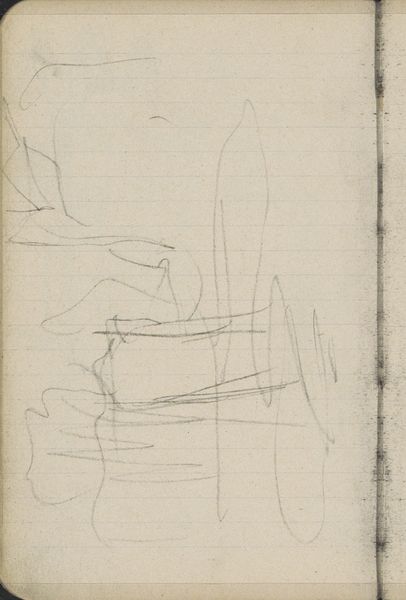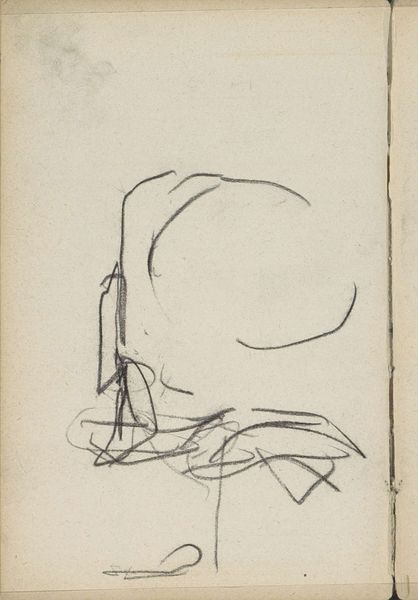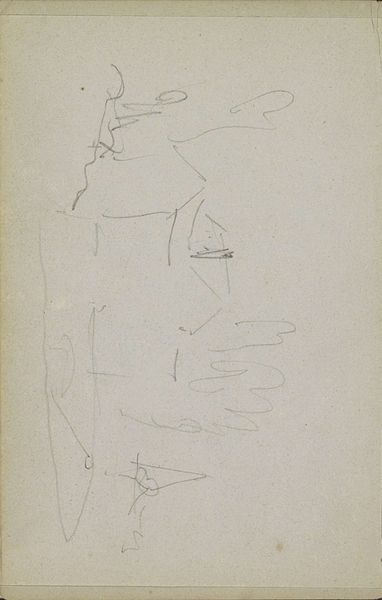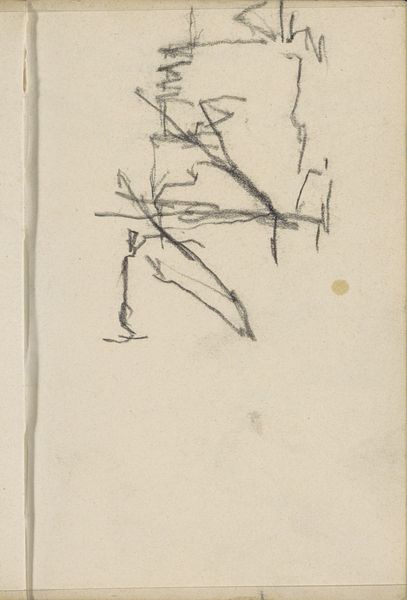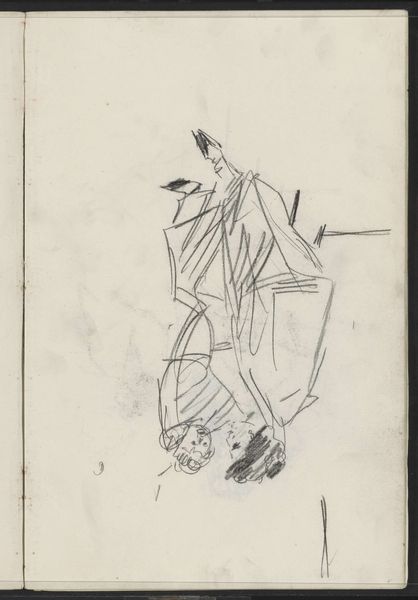
Copyright: Rijks Museum: Open Domain
Curator: Looking at this wispy sketch by George Hendrik Breitner, called "Landschap met twee figuren en een paard" – or "Landscape with two figures and a horse" – I'm struck by its quiet intimacy. Breitner rendered it in pencil somewhere between 1889 and 1904. It almost feels like peeking into his personal sketchbook. What is your first reaction to this image? Editor: Initially, I see a kind of fragmented world. The figures are only suggested. There's a dreamlike quality to the work, it looks ephemeral, almost vanishing, a ghost of a landscape, a mere collection of suggestive forms that seem to barely occupy the page. Curator: Precisely. Considering Breitner’s wider body of work, known for capturing Amsterdam's bustling city life and the working class, this sketch stands in stark contrast. It begs the question: What space did the Dutch countryside occupy in his mind? Were the pastoral and working classes fundamentally different? Why did Breitner, entrenched in capturing urban scenes, decide to capture it? I read this as an insight into Breitner’s commentary on urban fatigue that can be projected through this image. Editor: It is interesting how it contrasts with his other artworks. The symbols he uses in those images seem so much clearer. In his paintings of Amsterdam, we see a recurring motif of women dressed in somber attire in very direct scenes, emphasizing urban isolation and routine. Yet here, the symbols are so much vaguer and feel much less resolved; figures almost fading into the landscape itself, perhaps a feeling of interconnectedness. Is it a different story he’s trying to tell us, a rejection of the rigidity of the urban lifestyle in favor of something freer and more interconnected with the earth? Or is it that he feels no personal attachment with his figures that the symbolism wanes? Curator: That's compelling. I would suggest he makes no claims towards his connection with them as opposed to a rejection. Perhaps this form reflects the historical relationship with land at the time. In Breitner's era, the Dutch landscape was increasingly becoming politicized. Farmers rights were gaining national traction through publications that promoted equality and fair working standards in an age that was defined by inequality and corruption. Through this artwork, could he be documenting it without engaging in any activism in order to avoid persecution? Is it a safe commentary, to both comment, and stay out of the conversation, with art? Editor: It would not be out of character. This sketch then carries multiple interpretations as we can view this is a reflection of an evolving societal relationship between figures and landscapes with symbolic overtones that remain elusive even for us today. I see an interesting visual paradox, Breitner's lines hinting at broader truths. Curator: It certainly gives you food for thought; Thank you for unpacking that together, offering further nuance to the landscape.
Comments
No comments
Be the first to comment and join the conversation on the ultimate creative platform.


